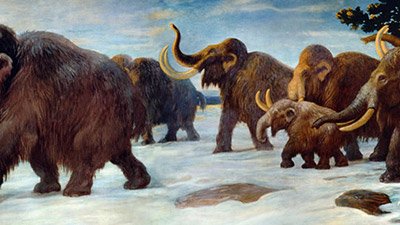
Giant Bugs: Why They Once Roamed the Earth
Did giant insects seek or shun a high oxygen atmosphere?
News Source
- National Geographic: “Why Giant Bugs Once Roamed the Earth”
The fossil record contains super-size versions of a number of creatures, including insects such as the giant dragonfly. Since no seagull-sized dragonflies fly the skies today, many wonder why they grew so large. A common idea among evolutionists and some creationists involves the presumption that giant growth was fueled by an atmosphere far richer in oxygen than ours. Wilco Verbeck and David Bilton have attempted to reconcile insect gigantism with the toxic1 effects of hyperoxia.
Verbeck and Bilton examined the effects of hyperoxia on stonefly larvae. Like dragonflies, juvenile stoneflies live in the water. They found that high levels of oxygen were far more detrimental to juvenile stoneflies than to air-breathing adults. Larvae are less able to regulate gas exchange than adult insects.
Larger larvae have a smaller surface area-to-volume ratio. Since oxygen intake by the larvae is related to their surface area, the researchers believe that larger larvae would have a survival advantage. The result: giant insects.
Hyperoxia is thought by many to have enabled giant insects to get by on smaller quantities of air, given the physical limitations of insect respiratory systems.
Hyperoxia is thought by many to have enabled giant insects to get by on smaller quantities of air, given the physical limitations of insect respiratory systems.2 Evolutionists generally believe the early earth had no oxygen because oxygen would have been toxic to the biochemical building blocks of life. Following the evolution of photosynthetic organisms, they believe the world became oxygenated. They maintain that Carboniferous coal swamps drove atmospheric oxygen up to 31-35 percent.3
Some creationists have espoused the canopy model, suggesting the pre-Flood earth experienced a massive greenhouse effect due to a vapor canopy. A hyperoxic atmosphere is a part of some versions of that model—as well as some other models. However, the canopy model has not held up to either scientific or biblical scrutiny. Answers in Genesis along with many creationists do not consider it a viable model, but we always want to encourage researchers who continue to examine the issue.4 We do not at present accept the idea that earth necessarily had an exaggerated level of atmospheric oxygen. Furthermore, the idea that earth once had no oxygen is not borne out by geological findings.5 Biblically we know that God provided the earth with oxygen early in the Creation Week—plants would have been producing it on Day Three and animals would have needed it to breathe by Day Five.
We cannot know for certain whether the pre-Flood atmosphere differed from our own—or, if so, to what degree. The global Flood and its aftermath may well have altered our atmosphere in some way. We cannot be dogmatic about differences. But we know that high levels of oxygen do have several detrimental effects.
Some have suggested that higher atmospheric oxygen was the cause of longer lifespans in the pre-Flood world.6 They suggest that people lived longer and some animals grew bigger because of the hyperoxia. However, genetics and physiology better explain the dramatic drop in post-Flood lifespan, accelerating the effects of the Curse on mankind.7
We do not have to invoke high oxygen levels to explain the existence of giant insects. Normal variation of some created kinds may have simply included gigantic varieties. Perhaps the climate changes in the post-Flood world were too stressful for many animal varieties that tended to grow large. With more extreme winters and shorter growing seasons, smaller varieties may have reached maturity and reproduced more successfully within the seasonal constraints. Natural selection would have then eliminated the larger varieties.
Thus while the current study tells us something about oxygen toxicity to larvae, we cannot assume the cause of insect gigantism has been uncovered, since there is no good reason to insist the world once had a hyperoxic atmosphere. We also cannot be dogmatic about the cause of gigantism or the extinction of those creatures. The idea that gigantic varieties of creatures were stressed out of existence by climate changes in the wake of the global Flood is a biblically consistent explanation. Even so, there may be other explanations yet to be thought of, and multiple factors may have been involved.
For More Information: Get Answers
Remember, if you see a news story that might merit some attention, let us know about it! (Note: if the story originates from the Associated Press, FOX News, MSNBC, the New York Times, or another major national media outlet, we will most likely have already heard about it.) And thanks to all of our readers who have submitted great news tips to us. If you didn’t catch all the latest News to Know, why not take a look to see what you’ve missed?
(Please note that links will take you directly to the source. Answers in Genesis is not responsible for content on the websites to which we refer. For more information, please see our Privacy Policy.)
Footnotes
- Despite the beneficial effects of a high level of oxygen or hyperbaric oxygen in certain instances, on balance high levels of oxygen are fairly toxic. For instance, hyper-oxygenation can cause blindness in premature babies and seizures, retinal damage, and alveolar collapse in adults.
- news.nationalgeographic.com/news/2007/07/070730-giant-insects.html
- news.nationalgeographic.com/news/2007/07/070730-giant-insects.html
- The First Atmosphere—Geological Evidences and Their Implications
- Running Out of Puff
- Ancient Biblical Lifespans: Did Adam Live Over 900 Years?

Answers in Genesis is an apologetics ministry, dedicated to helping Christians defend their faith and proclaim the good news of Jesus Christ.
- Customer Service 800.778.3390
- Available Monday–Friday | 9 AM–5 PM ET
- © 2025 Answers in Genesis



